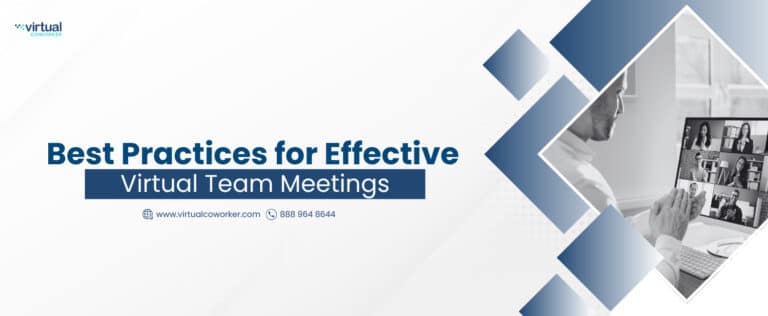Fostering Collaboration Between In-House Teams and Virtual Assistants
As businesses evolve in hybrid and remote-first environments, one key question surfaces: How do you build a team that works well, no matter where they are?
The answer lies in collaboration.
Combining in-house staff with skilled Virtual Assistants (VAs) gives businesses the flexibility and scalability they need to grow. But success doesn’t happen by simply assigning tasks to a VA. It occurs when everyone, virtual or onsite, functions as one aligned team.
Here’s how to foster seamless collaboration between your in-house employees and Virtual Assistants for stronger performance and smarter growth.
The Importance of Seamless Collaboration
Effective collaboration between in-house teams and VAs ensures:
- Enhanced Productivity: Clear communication and defined roles prevent task overlap and ensure efficient workflow.
- Diverse Perspectives: Combining in-house insights with external viewpoints fosters creativity and problem-solving.
- Scalability: VAs provide the flexibility to scale operations without the overhead of expanding physical office space.
Best Practices for Fostering Collaboration
1. Define Clear Roles and Responsibilities
Establishing well-defined roles prevents confusion and ensures accountability.
- Action Steps:
- Develop detailed job descriptions for both in-house staff and VAs.
- Outline specific tasks, expectations, and reporting structures.
- Regularly review and adjust roles as projects evolve.
2. Utilize Effective Communication Tools
Leveraging the right tools facilitates real-time collaboration and information sharing.
- Recommended Tools:
- Slack or Microsoft Teams for instant messaging and updates.
- Zoom or Google Meet for video conferencing.
- Asana, Trello, or Monday.com for project management and task tracking.
These platforms help maintain transparency and keep everyone aligned on project goals.
3. Establish Regular Check-Ins
Consistent meetings foster connection and provide opportunities for feedback.
- Suggestions:
- Schedule weekly or bi-weekly team meetings.
- Encourage open discussions about progress, challenges, and ideas.
- Use one-on-one sessions to address individual concerns and development.
4. Promote a Unified Team Culture
Creating a sense of belonging enhances morale and collaboration.
- Strategies:
- Include VAs in company-wide announcements and celebrations.
- Encourage participation in virtual team-building activities.
- Recognize and appreciate contributions from all team members.
Involving VAs in team meetings and brainstorming sessions helps them feel valued and part of the team.
5. Provide Access to Necessary Resources
Ensure VAs have the tools and information to perform their roles effectively.
- Key Resources:
- Company policies and procedures.
- Branding guidelines and templates.
- Access to relevant software and databases.
6. Implement Feedback Mechanisms
Regular feedback loops promote continuous improvement and address issues promptly.
- Approach:
- Conduct periodic performance reviews.
- Encourage VAs to share their insights and suggestions.
- Act on feedback to refine processes and enhance collaboration.
Real-World Example: A Hybrid Team Success Story
A mid-sized marketing firm integrated VAs into its content creation and client outreach processes. Establishing clear communication channels and involving VAs in regular team meetings increased project turnaround time by 30% and improved client satisfaction rates.
Conclusion
Fostering collaboration between in-house teams and Virtual Assistants is pivotal for modern businesses aiming to enhance efficiency and adaptability. By implementing clear communication strategies, defining roles, and nurturing a unified culture, organizations can unlock the full potential of their hybrid teams.
Ready to elevate your team’s collaboration? Discover how Virtual Coworker can connect you with skilled Virtual Assistants tailored to your business needs!








